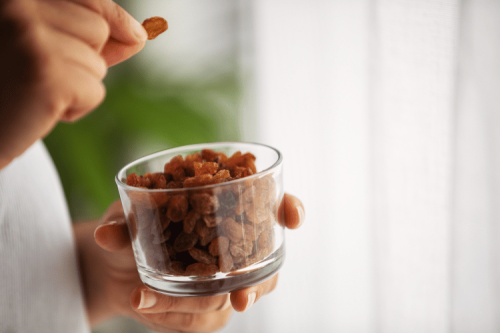
Even when the elderly need to feed themselves, they have significant issues swallowing food. This has major nutritional consequences, as well as problems with choking and pneumonia. Dysphagia, or fundamental issues with swelling, is a serious worry, especially when a person is old. The above factors significantly compromise the quality of life. Any elderly patient who has suffered from a stroke, a neurological disorder, or anything that physically weakens their muscles will have significantly impaired function when it comes to swallowing.
Discussing this example will help comprehensively understand dysphagia. The article explains the causes, symptoms, and other associated severe impacts of dysphagia, as well as the risks with diagnostic techniques. Special focus will be on the examination and intervention management. Caregivers loved ones, and medical professionals can all unify with the help of intervention procedures, hence enabling convenience and ensuring safety to improve the quality of life for patients with severe dysphagia.
What are the common causes of choking in older adults?

In older individuals, dysphagia – a condition that involves difficulty in swallowing – is the most common cause of choking. It may stem from age decline, muscle atrophy, structural deformities like Parkinsonism, Stroke, dementia, or myopathies. Suffering from diabetes, poor dental hygiene, bad dentures, and advanced age can also significantly lower saliva production. Together, these pose a great difficulty in mastication and deglutition. Furthermore, behavioral factors such as being inattentive while eating, eating at an inappropriate speed, and eating improper food consistently can aggravate the problem. Identifying these factors is very important for planning interventions to mitigate the issue.
How does age-related muscle weakness contribute to choking risk?
Malnutrition due to increased body mass index (BMI) has also been linked to poor health outcomes. Along with muscle atrophy due to a sedentary lifestyle, Poor dental hygiene and self-imposed dietary restrictions can further aid in developing eating disorders. All skeletal muscles in the neck, throat, esophagus, and glottis work together to execute swallowing. If any of them do not work at peak, the eating experience will not be the same without choking. Furthermore, hindered muscles will allow the bolus to be slowly released, and if the throat is not cleared, something stuck in there may cause choking.
What role do neurological conditions play in swallowing difficulties?
Neurological disorders are fundamental to understanding the reasons behind swallowing difficulties as they can affect the relevant parts of the machinery, that are, the muscles, nerves, and joints that work together in a swallow. Conditions like Parkinson’s disease, stroke, multiple sclerosis (MS), amyotrophic lateral sclerosis (ALS), and even dementia are prevalent causes of dysphagia. These disorders can affect the cranial nerves (combining V, VII, IX, X, and XII) and the associated nerve pathways, which can affect motor control, sensory input, and autonomic swallowing responses.
For example, in Parkinson’s disease, bradykinesia coupled with muscle rigidity may influence the timing and strength of a swallow. Stroke can severely damage the areas of the brain responsible for motor control of other things, leading to food aspiration, including the body's musculature. Evaluating abnormal swallowing function uses tools such as the penetration-aspiration scale (PAS) and videofluoroscopic swallow studies (VFSS). These tools reveal certain defects, such as retention within the pharyngeal morphemes or weak movement of the esophagus. Understanding these mechanisms would allow for developing a custom-made therapeutic plan to reduce risks, such as neuromuscular electrical stimulations or targeted swallowing exercises.
Can medications increase the risk of choking in seniors?
Medications can indeed make it more likely for seniors to choke. Sedatives, anticholinergics, and opioid painkillers, for instance, may impair muscle control, decrease saliva production, and dull the reflexes essential for safe swallowing. Further, medication xerostomia may also change the texture of food boluses, worsening their swallowability. It is important to note these side effects when changing treatment modality to improve the patient's care and decrease the probability of choking, especially for those who already have a dysphagia diagnosis.
What are the symptoms of dysphagia in older adults?

Dysphagia symptoms in older adults may encompass extreme coughing and choking while eating or afterward, feeling as though something is lodged in their throat or chest, food being expelled without an effort to vomit, sudden weight change, and chronic pneumonia secondary to aspiration. Other symptoms may include changing vocal quality to husky or gurgly, difficulty with saliva control, and extended eating duration. These symptoms must be recognized earlier to allow timely treatment to mitigate the healthcare complications associated with dysphagia.
How can you recognize the signs of difficulty swallowing?
One must pay attention to specific signs that demonstrate an abnormal swallowing process to determine impaired swallowing. Some of the key signs are weight loss or malnutrition, trouble starting a swallow, and greater severity, frequent coughing or choking during food or drink intake. Other, more sophisticated processes can aid in the diagnosis, such as prolonged duration of swallowing attempts, which exceeds two seconds for each phase, and reduction in tongue strength, which is estimated during swallowing, where typical values of adequate pressure are from 30 to 40 kPa, and any delay of the pharyngeal swallow reflex where typical latency is supposed to be atoms of less than one second. Altering voice quality to a gurgly or wet voice and food or liquid remnants in the mouth after swallowing can also indicate signs of dysphagia. These need to be monitored closely to avoid complications like malnutrition or aspiration pneumonia.
What sensations might indicate swallowing problems?
Dysphagia, or swallowing problems, can take different forms subjectively. Described sensations often include a food or liquid bolus sensation in the throat or chest (chest), pain with swallowing (odynophagia), and frequent throat clearing or assuming a ‘lump’ sensation in the throat (Globus sensation). Other signs are pressure or tightness in the chest during eating, retching or bringing food in the throat, and continuous heartburn or acid reflux. Users may also mention the need to chew more than usual or problems with manipulating the food bolus in the mouth before swallowing. More technically, these sensations could be related to decreased peristalsis of the esophagus, inadequate closure of the upper esophageal sphincter, or lack of timing of muscle activity during swallowing. These sensations, however, are significant for further clinical diagnosis.
When should an elderly person seek medical attention for choking symptoms?
Elderly patients experiencing symptoms related to choking should undergo medical evaluation if there are frequent choking, swallowing difficulties that worsen over time, unusual weight loss, or persistent cough episodes during meals. Active intervention is warranted when choking is followed by shortness of breath, severe pain, or the person cannot cough and clear the airways. These symptoms can arise due to underlying conditions such as dysphagia, esophageal syndromes, or other pathological conditions that require an expert’s opinion. First, steps must be taken to address the problems to reduce the risk of aspiration pneumonia and malnutrition.
How is oropharyngeal dysphagia different from esophageal dysphagia?

Oral pharyngeal dysphagia primarily occurs when there are impairments in the first phase of swallowing, in which there are deficiencies in the movement of food in the mouth to the pharynx and esophagus. It is often a sequela of many medical conditions, such as neurological diseases, muscular weakness, or any organic lesion affecting the pharynx and the upper esophageal sphincter. The symptoms may include cough, choking, nasal reflux of ingested food, or even aspiration during swallowing.
Esophageal dysphagia, as the term suggests, occurs in the later phase of the swallowing process and stems from an issue within the esophagus, like having a mechanical block in the digestive tract or failing to move the food through the tube. Symptoms usually comprise the sensation of food getting stuck in the throat or the chest, vomiting, pain, and soreness of the throat when swallowing. The main difference is in why eating becomes difficult and where precisely the problem is located.
What are the characteristics of oropharyngeal dysphagia?
From a clinical standpoint, oropharyngeal dysphagia is marked by the inability to start swallowing and is often linked with signs like cough, choking, or nasal regurgitation while eating. There is a high risk of aspiration, which poses the danger of respiratory problems, including aspiration pneumonia. Other symptoms of this condition include a feeling of having food stuck in the throat, blunted swallowing reflexes, and possible weight loss because of reduced consumption. It is commonly associated with various neurological and muscular diseases or structural deficits that disturb the coordination of oropharyngeal musculature for swallowing.
What causes esophageal dysphagia in older adults?
Esophageal dysphagia in older adults is primarily caused by age-related physiological changes in esophageal motility, structural abnormalities, or underlying medical conditions. Common causes include:
- Esophageal Stricture – Narrowing of the esophagus, often due to chronic gastroesophageal reflux disease (GERD), can result in difficulty swallowing excellent foods.
- Achalasia – A motility disorder where the lower esophageal sphincter (LES) fails to relax properly, leading to impaired passage of food into the stomach. Manometric studies often show a lack of peristalsis and elevated LES resting pressure (≥ 45 mmHg).
- Esophageal Rings and Webs – Structural anomalies such as Schatzki rings can form near the lower esophagus, intermittently obstructing food passage.
- Eosinophilic Esophagitis (EoE) – An inflammatory condition characterized by eosinophil infiltration in the esophageal lining, which may cause fibrosis and lumen narrowing.
- Presbyesophagus: Age-related weakening of the esophageal musculature and diminished peristaltic coordination can increase transit time and bolus retention.
- Neurological Disorders – Conditions such as Parkinson’s disease, stroke, and amyotrophic lateral sclerosis (ALS) can impair esophageal function indirectly by affecting swallowing mechanics.
- Esophageal Cancer – Malignancies can obstruct the esophageal lumen, presenting progressively worsening dysphagia for solids and, eventually, liquids.
Diagnostic evaluation typically involves barium swallow studies, esophagogastroduodenoscopy (EGD), and manometry. These procedures ensure the precise identification of underlying etiologies for targeted treatment.
What medical conditions can cause swallowing difficulties in the elderly?

Dysphagia or difficulty swallowing amongst the elderly may result from many medical issues. The following are examples of:
- Disorders Of The Nervous System – Coordination and muscle strength of the swallowing mechanism may be affected by several medical illnesses such as Parkinson’s disease, stroke, and dementia.
- Changes With Aging – A well-known contributor is the Presbyesophagus, which describes the senile reduction in motility and muscular tone of the esophagus.
- Disorders Of The Esophagus – Strictures of the esophagus, achalasia, and diverticula are examples of these conditions that can obstruct food passage.
- Eosinophilic esophagitis and gastroesophageal reflux disease (GERD) are inflammatory conditions that cause some inflammation and/or fibrosis, resulting in constriction of the esophageal lumen.
- Malignant diseases may create obstructions that progressively worsen swallowing difficulties – mainly esophageal carcinoma.
Each prompt sets out different symptoms, so swift diagnostic evaluation is needed to treat the problem appropriately.
How does GERD contribute to dysphagia?
Gastroesophageal reflux disease (GERD) contributes to dysphagia primarily through chronic esophageal irritation and damage caused by the recurrent backflow of stomach acid into the esophagus. This acid exposure can lead to inflammation, known as reflux esophagitis, which may cause tissue swelling and discomfort during swallowing. Over time, repeated inflammation can result in the formation of esophageal strictures, which are narrowings caused by scar tissue that physically impede the passage of food.
Technical Parameters of GERD-Related Dysphagia:
- Esophageal pH – A pH below 4 in the esophagus signifies acid reflux episodes contributing to mucosal damage.
- Lower Esophageal Sphincter (LES) Pressure – Abnormally low LES pressure (<10 mmHg) allows acid to flow back into the esophagus, exacerbating irritation.
- Esophageal Manometry – Metrics such as weak peristaltic contractions (<30 mmHg) can reveal impaired esophageal motility secondary to GERD.
- Endoscopic Findings – Evidence of mucosal erosion, ulcers, or strictures confirms esophageal damage linked to GERD.
Proper management of GERD, including acid suppression therapy and dietary modifications, is critical to preventing or alleviating dysphagia in affected individuals.
Can cancer lead to choking problems in older adults?
Choking problems for elderly people can be a consequence of cancer. For instance, tumors located in the esophagus, throat, or other parts of the body can obstruct food and, as a result, dysphagia and choking. Moreover, cancer treatment like radiation or surgery can also cause scarring or even nerve injury that makes it harder to swallow. To combat this, proper assessment and action must be taken to solve these issues correctly.
What impact does multiple sclerosis have on swallowing?
Dysphagia can explain the condition where muscles coordinating swallowing fail to work together, and in an MS patient, this can result from the disease process. Causes for this include demyelination within the central nervous system, which obstructs nerve signals needed for effective swallowing. Technical aspects include, but are not limited to, delayed pharyngeal swallow response, decreased upper esophageal sphincter (UES) opening, and abnormal pharyngeal peristalsis. These problems can become aspiration, malnutrition, or dehydration if treated poorly. Continuous follow-ups must be conducted through swallowing studies and appropriate swallowing exercises to prevent these.
How can choking risks be reduced for older adults?

The approach for reducing choking risks in older adults incorporates changes in diet, posture, and even therapeutic interventions. One of the steps to minimize the likelihood of airway obstruction is ensuring that food is appropriately textured and cut into small, manageable pieces. Encouraging upright positioning while eating assists in proper swallowing and reduces the risk of aspiration. Furthermore, speech-language pathologists can evaluate older adults with known dysphagia by prescribing proper swallowing exercises during mealtime, for instance, the chin-tuck technique. Regular monitoring and collaboration between caregivers and healthcare providers are crucial to address evolving needs.
What dietary modifications can help prevent choking?
To prevent choking, changes to one’s diet should include altering food texture, size, and how it’s cooked. Soft, moist foods are generally safe because they are easy to chew and swallow. For those with severe stiffs and difficulty swallowing, something in the form of pureed or mashed food works best. One-inch cube-sized or smaller bites should reduce the chances of obstruction in the airway. Also, avoiding crackers and peanut butter will drastically reduce the risk as they are dry, crumbly, or sticky. Liquid thickening agents can be added to achieve nectar or honey-like consistencies. When swallowed, this is easier to do as fluids are slow during the flow, making it easier to control during the process. In tailoring these modifications, care plans should be developed around the individual thorough assessments by qualified healthcare professionals.
How effective is swallowing therapy for elderly adults?
Targeted primarily to clinical evaluation and personalized for older adults, swallowing therapy is effective. For instance, elderly adults exhibiting difficulties with powerful postures can be rehabilitated with specific oropharyngeal maneuvers. For example, the effortful swallow and Mendelsohn maneuvers enable enhanced elevation of the larynx alongside contraction of the pharynx. Several investigations demonstrate that the therapy's effectiveness is subsequently enhanced, resulting in lower aspiration symptom probability for the patient. These outcomes are usually represented by increased Penetration-Aspiration Scale (PAS) marks and diminished waste material in the pharynx during a videofluoroscopic swallowing study (VFSS). While the rest of the adult population does not display severe aspiration symptoms, older adults are not only more prone to these issues but also more vulnerable to the roots of these problems. Furthermore, the approaches and techniques utilized in conquering these issues depend on the patients’ attitudes toward therapy, the individualized prerequisites that elders possess, and their willingness to change.
What safety precautions should be taken when eating alone?
I observe good food hygiene practices, such as serving hot meals and keeping cold foods at the right temperature. When consuming leftover food, I ensure it is at a specific temperature where bacteria can no longer survive. I also pay attention to my environment for personal security, especially when in unfamiliar places, and avoid distractions such as using my phone too much so that I remain focused.
References
-
Dysphagia in the elderly: management and nutritional considerations - A detailed article on the management and dietary aspects of dysphagia in elderly patients.
-
Dysphagia in Older Adults - Mayo Clinic Proceedings - A comprehensive resource discussing causes, diagnosis, and management of dysphagia in older adults.
-
Dysphagia and its association with other health-related risk factors - A review exploring the relationship between dysphagia and various health risks in institutionalized elderly individuals.
Frequently Asked Questions (FAQ)
Q: What is dysphagia, and how does it affect elderly adults?
A: Dysphagia is a medical term for difficulty swallowing. In elderly adults, it can affect the ability to safely move food or liquids from the mouth to the esophagus. This condition can lead to choking, aspiration, and other serious health complications. Dysphagia is not a typical sign of aging, but it becomes more common as people get older due to weakening throat muscles and other age-related changes.Q: What are the common causes of dysphagia in older adults?
A: Causes of dysphagia in elderly adults can include neurological disorders affecting the nervous system, such as Parkinson's disease or stroke, gastroesophageal reflux disease (GERD), esophageal strictures, achalasia, and dental problems. Other factors that may cause dysphagia include certain medications, radiation therapy to the neck or chest, and age-related muscle weakness in the throat and esophagus.Q: What are the symptoms and causes of dysphagia that elderly adults should watch for?
A: Symptoms of dysphagia include trouble swallowing, coughing or choking when eating, a sensation of food being stuck in the throat or chest, gurgling sounds from the throat, regurgitation, and unexpected weight loss. Causes can range from structural problems in the esophagus to neurological issues. If these symptoms persist, it's essential to consult a healthcare provider for a proper evaluation of dysphagia.Q: How can dysphagia lead to choking and suffocation in elderly adults?
A: Dysphagia can cause food or another object to block the airway, leading to choking and suffocation ultimately. This is particularly dangerous for elderly adults, especially those living alone. Choking is the fourth leading cause of unintentional injury death in older adults. Caregivers and the elderly must know proper eating techniques and emergency procedures to prevent these life-threatening situations.Q: What role does the Mayo Clinic play in dysphagia research and treatment?
A: The Mayo Clinic is a leading institution in dysphagia research and treatment. It offers comprehensive dysphagia evaluations, utilizes advanced diagnostic techniques, and develops innovative treatment approaches. The Clinic's expertise can help elderly patients manage their swallowing difficulties more effectively, potentially improving their quality of life and reducing the risk of complications.Q: How can dentures and dental problems contribute to dysphagia in older adults?
A: Dental problems and ill-fitting dentures can significantly contribute to dysphagia in elderly adults. They can affect the initial stages of swallowing, making it difficult to chew food properly or form a food bolus. This can increase the risk of choking or aspiration. Regular dental check-ups and proper denture maintenance are essential for preventing swallowing difficulties related to oral health issues.Q: What is the connection between heartburn, GERD, and dysphagia?
A: Heartburn and gastroesophageal reflux disease (GERD) can contribute to dysphagia in elderly adults. Chronic acid reflux can lead to inflammation and scarring of the esophagus, causing a narrowing known as a stricture. This can make it difficult for food to pass through the esophagus. Additionally, GERD can weaken the lower esophageal sphincter, potentially leading to esophageal spasms and swallowing difficulties.Q: How can caregivers help prevent choking and manage dysphagia in elderly adults?
A: Caregivers can help by ensuring proper positioning during meals (sitting upright), encouraging smaller bites and thorough chewing, avoiding distractions while eating, and modifying food textures as recommended by a healthcare professional. They should also learn the Heimlich maneuver and be prepared to act quickly if choking occurs. Regular communication with healthcare providers and following recommended treatment plans can help manage dysphagia and reduce the risk of complications.-
Christina HilaI am 86 yrs old. In good general health. I have been diagnosed with achalasia and had one treatment with a botox injection to my esophagus. I am still suffering daily with episodes of swallowing difficulty. The sensation is primarily in my upper chest about 10-15 minutes after ingesting food. I try to eat soups or ground up food. The choking episodes are accompanied by vast-vagal symptoms . Where can I find more detailed information about my condition with explanation of physiology and possible exercises or remedies. Thank you







 Login with Google
Login with Google Login with Facebook
Login with Facebook